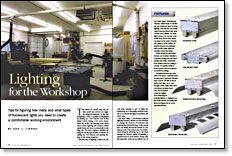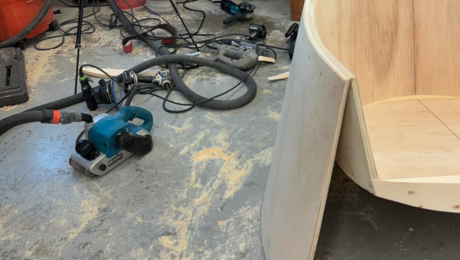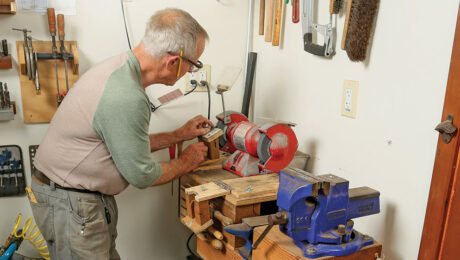Lighting for the Workshop
Tips for figuring how many and what types of fluorescent lights you need to create a comfortable working environment
Synopsis: Use this guide to workshop lighting to illuminate your shop and ensure better results faster and more economically. Jack L. Lindsey, formerly an engineer for Southern California Edison Co., walks readers through the best options for fixtures, placement, ballasts, and lamp choices, so you can light your shop on a budget. Also, use his chart to calculate how much light you need based on your shop size, and where to place them.
The owner of a small shop can seldom justify the services of a lighting design professional. So the task of lighting a shop is usually accomplished by putting up a few fixtures and, if that doesn’t work, adding a few more. Sometimes this works, but learning some of the basics about lighting will produce better results faster and more economically in the long run. The most common mistakes are using the wrong type of lamp or fixture, installing too few fixtures and putting fixtures in the wrong locations.
The first step in lighting a shop is to decide what strategy to use: To light the whole shop in a reasonably uniform manner or to concentrate light at machines and work areas.
For small shops, I recommend uniform lighting because it allows you the freedom to change the location of machines and workstations within the shop. It also means you can install fluorescent fixtures in continuous rows. This reduces the cost of electrical wiring by allowing you to run wires through the fixtures instead of installing a separate feed to each fixture. If you take this approach, wires are run within 3 in. of he ballast, so you must use wire that is rated for 90°C.
How many fixtures do you need?
How much light you need depends on the visual difficulty of the work you do and how well your eyes function. Eyesight deteriorates with age, so we need more light as we grow older. Lighting levels are described by a unit of measure called the footcandle (fc). A woodshop should be lit uniformly to a level of 50 fc to 100 fc. You can provide higher levels, if needed, with a separate fixture. Plan for 50 fc if the average worker is less than 40 years of age and doesn’t do much work that is difficult to see, such as small, intricate shapes or dark colors. For workers who are more than 40 years of age or who do work that is difficult to see, plan for 100 fc.
As light leaves a fixture and travels to your workbench, it spreads but. You get higher lighting levels near the fixture, with those levels dropping rapidly as the distance from the fixture increases. Because of the diminishing levels of light, you need to limit the maximum spacing between fixtures to avoid dark spots. To figure the maximum spacing between fixtures, you need to know the type of fixtures and the horizontal plane in which visual tasks are performed—for most shops that means the top of the workbench, which is ft. to 3 ft. off the floor. If fixtures are mounted 10 ft. above the floor and the workbench height is 3 ft., the distance between the fixtures and the workbench is 7 ft.
From Fine Woodworking #154
For the full article, download the PDF below:






















Log in or create an account to post a comment.
Sign up Log in